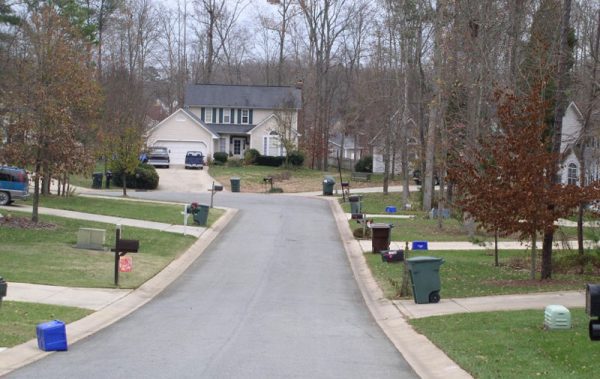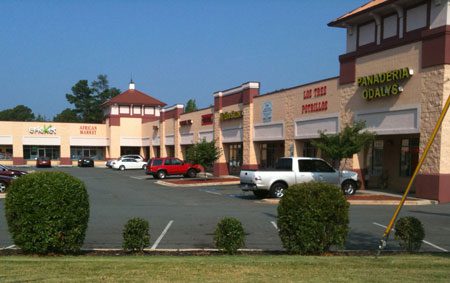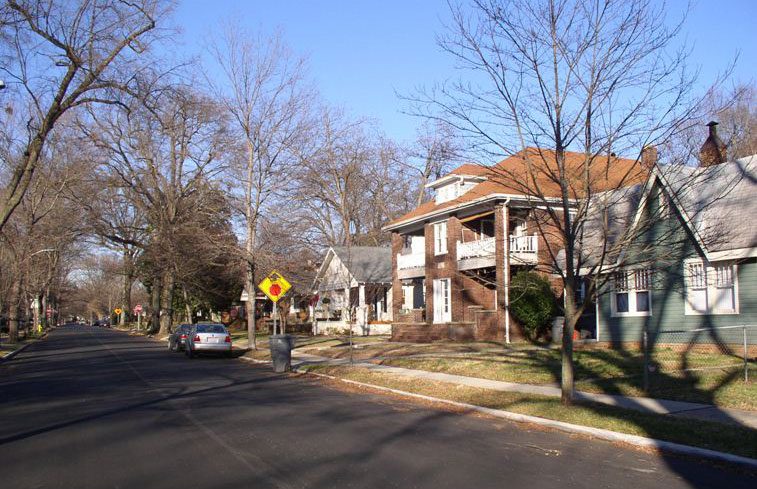A burning question for Sun Belt cities

It was a hot night in a hot city the day after the hottest month ever recorded in the United States. By 7 the temperature had slid from the 90s to the high 80s, as I pulled up in front of a 1960s split-level on a half-acre lot in a vast subdivision of 2,450 single-family homes.
I was 7 miles from The Square uptown – in Manhattan terms that’s roughly as far as Wall Street to the Metropolitan Museum of Art. But this was not Manhattan. It was Charlotte.
Regardless of thermometers, Charlotte has been hot for years now, as people streaming in from across the country and the globe made it one of the nation’s fastest-growing metros. They’re drawn by the image of a prospering city with jobs and reasonably priced homes, a place of shade trees and lawns. Next month the city arrives on the world stage as host of the Democratic National Convention.
Like its Sun Belt sisters – Atlanta, Orlando, Dallas, for instance – Charlotte boomed in the postwar era, although a more accurate term might be “post-central-air-conditioning era.” And like almost everywhere in America since the 1950s, growth has looked much like the neighborhood I was visiting: houses only (zoning bans other uses), on large lots, built and purchased by people who assumed all residents would own cars and drive to work, shopping or just about anywhere.
And that’s the weak underbelly of the Sun Belt boomtowns. Can cities like this one, made up mostly of this kind of neighborhood – strung together by corridors of big-box stores, fast-food joints and strip centers, all built on an assumption of cheap fuel, clean air and a stable planetary climate – stay competitive as the world focuses on conserving energy and shrinking carbon emissions?
Inside the split-level, a small group sat overlooking a back yard of mature trees, talking about the neighborhood’s future. I’d been invited to listen as they followed up a meeting two weeks before, where they had brainstormed a long wish-list of items such as “walkability … with destinations (ie café/coffee shop),” “convenient public transit,” “general store (could be combined with café/coffee shop),” “farmers market” and so on.
“I know you have to have some density to support the retail,” one neighbor said.
“I’m not against density,” said another. “I’m an environmentalist. I don’t want sprawl to go on forever.”
Yet talk focused on worries about a proposal from Charlotte city planners trying to nudge more homes into neighborhoods citywide without the traumatic intrusion of apartment towers. The idea is to allow duplexes on any lot zoned for single-family homes, capping the number of duplexes on a block. The neighbors here feared, not unreasonably, that too many rental duplexes could undermine neighborhood stability and lower property values. “My home is my biggest investment,” said the self-described environmentalist.
They “bought into a lifestyle,” some said, of single-family houses, yards and trees. Would duplexes and more density change that?
Yet some also clearly longed for more: To be able to shop without always driving. Nearby transit options. The city of Charlotte’s Neighborhood Quality of Life Study 2010 measured “percent of persons with access to basic retail” and measured this neighborhood at “0.0 percent.” Not one transit route goes through the large, spread-out neighborhood.
The neighbors didn’t use this word, but their wish list sounded like they wanted urbanity. Yet can an expanse of more than 2,000 single-family houses on big lots achieve urbanity? The question matters for every urban region that, like Charlotte, is mostly built of neighborhoods like this.
Despite the lawns and mature trees here, accumulating research points to the alarming conclusion that a lifestyle of single-family homes on big lots is more environmentally harmful than denser, city-style neighborhoods.
When things are closer, people drive less. Transit can serve more customers with less expense. Smaller homes need less heating and cooling. Buildings with shared walls retain more heat. Together, those factors make city-style living easier on the planet. The average single-family detached home consumes 88 percent more electricity than the average apartment in a five- or more-unit building, economist Edward Glaeser wrote in his Triumph of the City. This too, from the book: Yearly gas consumption per family declines by 106 gallons as the number of residents per square mile doubles.
So where does that leave this neighborhood? Decades of sprawling suburbanization mean it’s now considered “in-town,” a description of location, not neighborhood form. Charlotte’s uptown is a small urban core sized for when Charlotte was a big town too hot for Northerners. By the time Charlotte’s growth zoomed, the era of single-use zoning, interstates and suburban tract homes was well under way. The city’s “historic” close-in neighborhoods are early 20th-century suburbs, not urban neighborhoods. When this split-level was built in the 1960s, who had any inkling that a home in a tree-shaded subdivision might create more environmental problems than apartments in the heart of downtown?
Neighbors here aren’t unfeeling polluters, segregationists or income snobs – at least, no more so than people in general. They see a more urban future maybe heading their way and want a say, because, as for most middle-class Americans, protecting their property values in a real sense means protection from old-age poverty.
But as Charlotte and other Sun Belt cities keep growing, few of their choices are palatable: Keep sprawling over the landscape? Or begin a vast retrofit, carting houses like this one to landfills to build apartments and stores?
Across America’s suburban-form cities, that may be the hottest question of all.
Mary Newsom is associate director of urban and regional affairs at the UNC Charlotte Urban Institute. Views expressed here are hers and not necessarily the views of the UNC Charlotte Urban Institute or the University of North Carolina at Charlotte.
This article originally appeared, in slightly different form, at Citiwire.net.